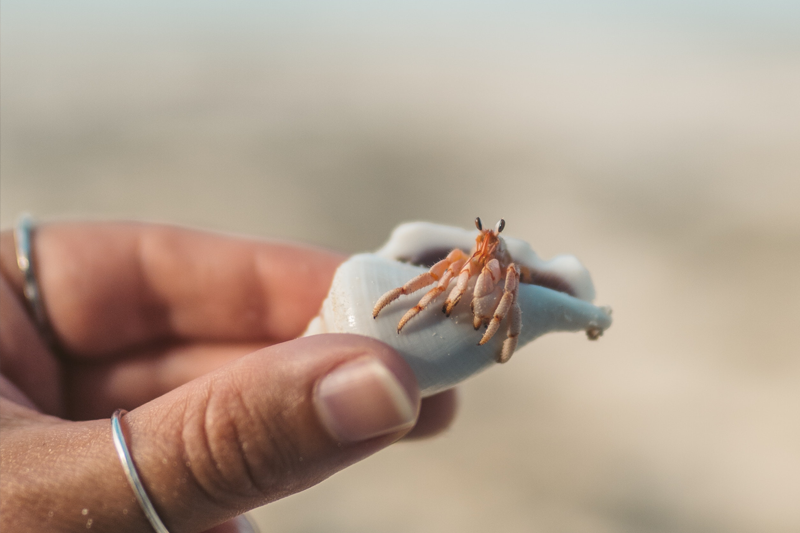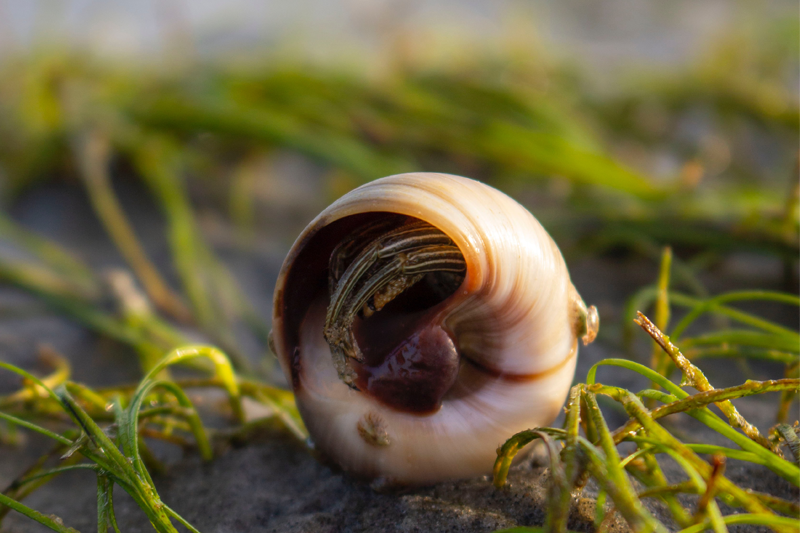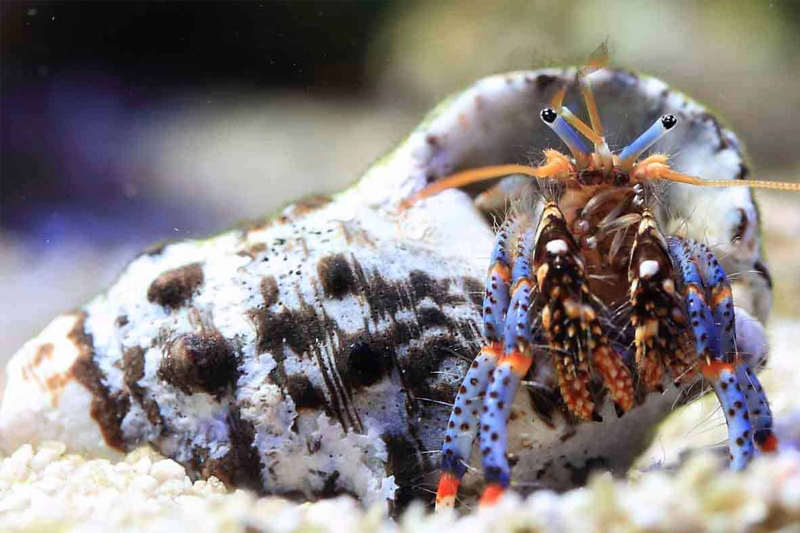- Whenever a male hermit crab mates with a female one, it will lay a thousand eggs and these female hermit crabs will hold onto their left side of the abdomen.
- Female hermit crabs then will care and hold on to these eggs for about a month as the eggs mature.
- When the eggs ready to hatch, female hermit crabs then go down to the ocean whenever there’s a high tide. The reason for this is so the female hermit crab will lay the eggs into the tide. Or sometimes they fling their eggs into the water. And when hermit crab eggs come into contact with salt water, it will start to hatch.
- Once the eggs hatch, new larvae hatchling appears and these are called Zoea. They are tiny and float along as plankton, along with other small creatures such as shrimps and other crustaceans.
- Each Zoea will go through 4-6 stages and will last 40-60 days each stage as its size gets bigger.
- Each Zoea grows into a Megalopa, it’ll look like a combination of a hermit crab and lobster. This stage typically takes about a month.
- Once it reaches the end of the megalopa stage, the hermit crab will look for its first shell and it will be spending more time out of the water and more in the land.
- Finally, once the Megalopa starts burying itself into the sand to start the molting process and metamorphosis into a juvenile hermit crab. The reason also why hermit crabs will stay longer inland is because of their gill changes in the metamorphosis stage which affects their breathing underwater.







